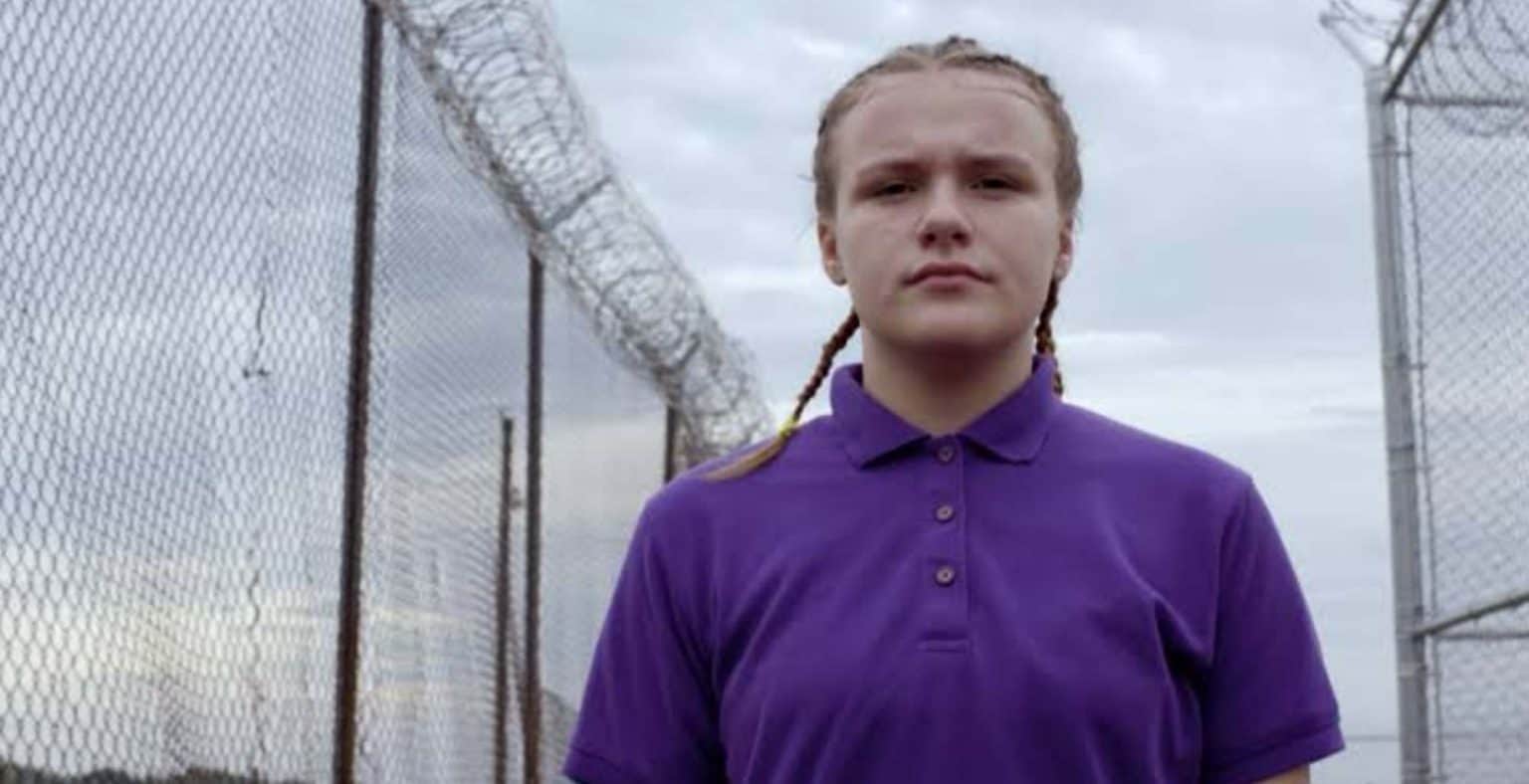Girls Incarcerated: Where Are They Now Season 2 is a compelling docuseries that delves into the lives of young women who have faced incarceration and the challenges they encounter as they reintegrate into society. This docuseries not only highlights their struggles but also celebrates their resilience and growth. It's a powerful narrative that sheds light on a critical issue affecting countless lives across the globe.
The series has garnered significant attention for its raw and unfiltered portrayal of the lives of these young women. It offers viewers an opportunity to understand the complexities of the juvenile justice system and the societal factors that contribute to youth incarceration. By focusing on real-life stories, the series aims to foster empathy and inspire change.
As we explore the lives of these women in "Girls Incarcerated: Where Are They Now Season 2," we will uncover not only their past experiences but also their current journeys and aspirations for the future. This article will provide a detailed overview of the docuseries, the stories behind it, and its broader implications. Let’s dive in!
Read also:Molly Santana A Rising Star In The Entertainment Industry
Table of Contents
- Biography of the Main Characters
- Overview of Girls Incarcerated Season 2
- The Impact of Juvenile Incarceration
- Personal Stories: Where Are They Now?
- Rehabilitation and Reintegration Efforts
- Key Statistics on Youth Incarceration
- Challenges Faced Post-Incarceration
- Potential Solutions and Policy Changes
- Media Representation of Incarcerated Girls
- Looking to the Future: Season 2 Impact
Biography of the Main Characters
Main Characters and Their Backgrounds
Before diving into the details of the series, it’s essential to understand the main characters featured in "Girls Incarcerated: Where Are They Now Season 2." Below is a brief biography of some of the key individuals whose stories are highlighted in the docuseries:
| Name | Age | Incident | Current Status |
|---|---|---|---|
| Samantha Johnson | 21 | Convicted for theft at age 16 | Working as a counselor for at-risk youth |
| Ashley Carter | 23 | Served time for assault | Pursuing a degree in social work |
| Lauren Rodriguez | 25 | Incarcerated for drug-related offenses | Advocate for prison reform |
These women, among others, share their experiences and transformations, providing a window into the realities of post-incarceration life.
Overview of Girls Incarcerated Season 2
What Makes Season 2 Unique?
Season 2 of "Girls Incarcerated: Where Are They Now" builds on the foundation laid in the first season by focusing on the long-term effects of incarceration on young women. The series highlights the progress made by the featured individuals and the obstacles they continue to face. It also addresses the societal stigma associated with having a criminal record and the efforts to overcome it.
Girls Incarcerated: Where Are They Now Season 2 explores themes of redemption, resilience, and hope. It offers a platform for these women to share their stories and advocate for change in the justice system.
The Impact of Juvenile Incarceration
Long-Term Consequences
Girls who experience incarceration often face lifelong challenges. These include difficulties in securing employment, accessing education, and rebuilding relationships. The stigma attached to having a criminal record can severely limit opportunities for personal and professional growth.
Research indicates that early exposure to the justice system increases the likelihood of reoffending. This cycle of incarceration perpetuates societal inequality and hinders the potential for meaningful rehabilitation.
Read also:Discovering Kristin Culbertson Fort Wayne A Journey Through Her Life And Achievements
Personal Stories: Where Are They Now?
Transformation and Growth
The docuseries showcases the remarkable transformations of several women. For example, Samantha Johnson, who was convicted for theft at the age of 16, now works as a counselor for at-risk youth. Her journey from incarceration to becoming a mentor highlights the power of second chances and the importance of supportive networks.
- Samantha Johnson: From incarceration to counselor
- Ashley Carter: Pursuing higher education in social work
- Lauren Rodriguez: Leading advocacy efforts for prison reform
These stories inspire hope and demonstrate that rehabilitation is possible with the right resources and opportunities.
Rehabilitation and Reintegration Efforts
Effective Strategies for Success
Rehabilitation programs play a crucial role in helping formerly incarcerated individuals reintegrate into society. These programs focus on education, vocational training, and mental health support. Successful reintegration requires a holistic approach that addresses the root causes of incarceration and provides ongoing support.
Community-based initiatives, such as mentorship programs and job placement services, are vital components of effective rehabilitation. They help bridge the gap between incarceration and reentry, ensuring that individuals have the tools they need to succeed.
Key Statistics on Youth Incarceration
Data Supporting the Need for Change
According to the National Institute of Justice, approximately 70,000 youth are incarcerated in the United States each year. This number highlights the urgent need for reform in the juvenile justice system. Additionally, studies show that girls of color are disproportionately affected by incarceration, with rates significantly higher than their white counterparts.
Key statistics to consider:
- Approximately 70,000 youth are incarcerated annually
- Girls of color face higher rates of incarceration
- Recidivism rates are significantly lower for those who complete rehabilitation programs
These figures underscore the importance of addressing systemic inequalities and implementing evidence-based solutions.
Challenges Faced Post-Incarceration
Barriers to Success
Post-incarceration, women often encounter numerous challenges. These include:
- Difficulty finding employment due to criminal records
- Limited access to affordable housing
- Social stigma and isolation
Addressing these challenges requires a coordinated effort from government agencies, non-profits, and community organizations. By creating pathways for success, we can help break the cycle of incarceration and promote positive outcomes for all individuals involved.
Potential Solutions and Policy Changes
Steps Toward Reform
Several policy changes and initiatives can help improve the lives of formerly incarcerated women. These include:
- Expanding access to education and vocational training programs
- Implementing restorative justice practices
- Reducing barriers to employment for individuals with criminal records
By advocating for these changes, we can create a more equitable and supportive environment for women transitioning from incarceration to reentry.
Media Representation of Incarcerated Girls
Portrayal in Popular Culture
The media plays a significant role in shaping public perception of incarcerated girls. Shows like "Girls Incarcerated: Where Are They Now" provide a platform for authentic storytelling and challenge stereotypes. However, it’s important to ensure that media representation is balanced and respectful, avoiding sensationalism and promoting understanding.
By highlighting the humanity and resilience of these women, the series fosters empathy and encourages viewers to engage in meaningful discussions about justice and reform.
Looking to the Future: Season 2 Impact
A Path Forward
Season 2 of "Girls Incarcerated: Where Are They Now" leaves a lasting impact on its audience. It not only entertains but also educates and inspires action. The stories shared in the series serve as a call to action for viewers to support efforts aimed at reforming the juvenile justice system and uplifting marginalized communities.
In conclusion, the docuseries highlights the importance of rehabilitation, reintegration, and systemic change. It encourages viewers to take action by:
- Supporting organizations that work with formerly incarcerated individuals
- Advocating for policy changes at the local and national levels
- Sharing the series with others to raise awareness
Thank you for reading this comprehensive guide on "Girls Incarcerated: Where Are They Now Season 2." We hope you found it informative and inspiring. Please feel free to leave a comment, share the article, or explore other content on our site. Together, we can make a difference!

